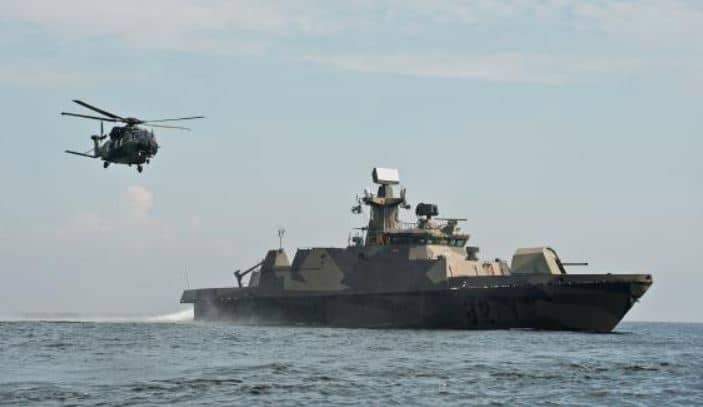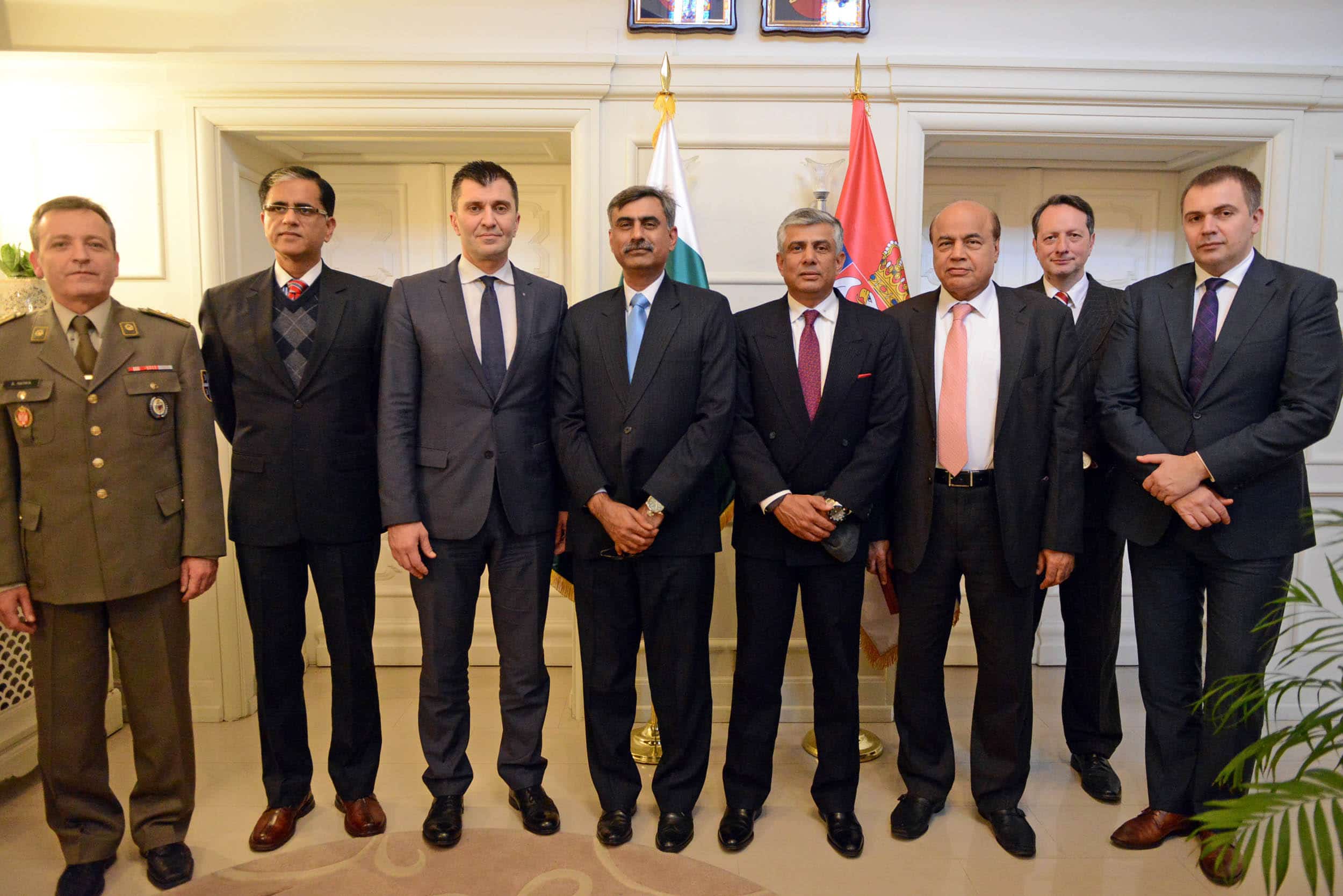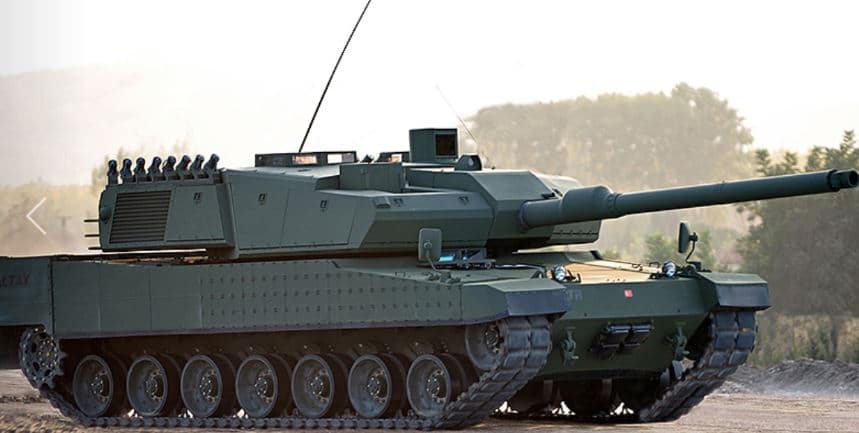2072Views 8Comments

Finland approves €223 m for arming Hamina FAC with torpedoes
On December 19 the Finnish Ministry of Defence (MoD) approved €223 m for upgrading the Finnish Navy’s four Hamina-class fast attack crafts (FAC) with lightweight anti-submarine warfare (ASW) torpedoes.
As per the MoD, the Hamina FACs will be armed with a lightweight torpedo (LWT) system from Sweden’s Saab (i.e. Saab Tp 47 LWT). The upgrade is intended to serve as a bridge between the retirement of the Rauma-class FAC and the induction of the Squadron 2020 corvettes.
Finland intends to operate the Hamina FAC until 2035. It is the Finnish Navy’s anti-access and area-denial (A2/AD) asset. Currently, it is armed for deterring ships and low-flying aircraft, but the inclusion of the Saab Tp 47 LWT will make it a complete defensively-focused multi-mission asset.
Notes & Comments:
The Hamina FAC has a displacement of 250 tons. Despite its small size, the Hamina FAC is armed with a Bofors 57 mm main cannon, anti-ship warfare (AShW) and anti-air warfare (AAW) munitions that in fact are standard-fare on large corvettes and frigates. Its superstructure is made from carbon fiber composite materials, helping with radar cross-section and weight reduction in the design.
The Hamina FAC is armed with four Saab RBS-15 Mk3 anti-ship missiles (AShM) and eight Denel Dynamics Umkhonto IR surface-to-air missile (SAM) systems. FACs under 500-tons are rarely equipped to this level, such ships are often armed with a main gun, AShM and possibly pedestal-mounted SAM (generally in the range umbrella of under 10 km, while the Umkhonto IR has a range of 20 km).
In the 2020s, the Finnish Navy is slotted to induct four multi-mission corvettes. The aim is to enable the Finnish Navy to replace seven aging ships and to continue providing a “year-round and long-endurance presence [in the Baltic Sea] in all weather and ice conditions.”



8 Comments
by Steve
We understand the concept of up-arming small warships but in the context of our conflict with India small ships with limited reach weapons will be next to useless. Our Azmat/Type 037II class carry 8 C-802 and a CIWS. We could up-arm our FAC/missile boats but Finland is spending $55M per ship only to add light torpedoes. If we were to install Umkhonto and torpedoes as well, costs may well become same as a new frigate, so why bother. I also don’t think there will be enough space to add all these weapons in a 500t boat as only a 23mm was chosen rather than a 75mm because of lack of hull space.
I have always argued for larger multi-mission frigates and destroyers with a powerful AAD element. Even if we buy 2 initially and slowly build up numbers.
by Muhammad Irfan masood
I think Pakistan Should intigrate Air defence system in Azmat Class FAC as this Filand FAC is already having although it is Just 250ton whilw Azmat Class FAC is 560ton
by Muhammad Irfan masood
I think Pakistan Navy Need to learn from Finland Hamina Class FAC as this is a small boat of only 250tons and having antisubmarine, antiship, anti aircraft and heavy main cannon if you compare it with Azmat class FAC of Pakistan navy with 560 Ton. Azmat FAC is lacking anti-aircraft missile and small cannon only.
by Joseph
You probably think only your government is up to no good, but in a democratic setting most western governments are not that different.
Take Australia for example, we bought French submarines and if they are built in France it costs about $20 billion, but if built in Australia it costs $50 billion. And of course we are building them in Australia. Why? Because it keeps shipyards in South Australia open and create thousands of jobs, and that is where marginal constituencies are. What is $30 billion compare to marginal seats?
You can say local defense industry is important for every country, but no. You keep local industry if it is commercially viable, Australian manufacturing sector is anything but.
We used to have car manufacturing plants, three of them, all foreign car makers. To keep them viable we have to put up tariff so Australian cars are twice as expensive as foreign cars and on top of that government used to give these manufacturers $150 million a year for them to stay in Australia. Of course there is no chance of exporting any of those cars.
Basically it costs much less if government directly pays these artificially generated employment. And in long term they are never going to be competitive, and they are not designing anything, they are just building them.
But if it makes electoral sense, then why not. In the end politicians hardly ever do things for their countries unless these things align with their own interests.
by Steve
Of topic so apologies to mods. I agree that the democratic system is messy and difficult to manage. Special interest groups, lobbyists of countries and big corporations, campaign contributions from vested interests, patronage, and positions on big companies’ boards makes for an inherently flawed system that breeds corruption. I’m talking about the West. Tight regulation and good oversight may sort it out, but often does not work. The alternative can be successful at least in the short term like China has shown but it is too dependent on personalities and open to even more corruption. No system is perfect but our democracy is a sham with politicians openly diving into the cash till with both hands, to the extent of damaging their own country, because of weak regulatory institutions though recent events give some hope. Back to missile boats. Does not look like we can retrofit a Umkhonto system on the boat, not enough space. Having only a CIWS is dire!
by Joseph
In western countries corruptions are usually indirect. Like in Australia politicians usually end up on boards of large companies. In US from what I hear generals usually end up on boards of defense companies. US presidents once off the job usually make over $10 million in the first year by giving paid speeches. etc.
I guess that is progress.
I also think the Finnish upgrade of those boats does not make financial sense, but maybe they make electoral sense.
I am also sorry about the very much off topic rant.
by TZK
Considering there is long coastline to the east where the enemy could launch surface to ship missiles as well as air attacks on PN vessels, not forgetting carriers so air and anti-shipping missile defences essential for PN. I am also surprised that no one has yet developed a defence against the long range air surveillance plane such as P8. A business jet armed with air to air missiles and a long range radar could be developed to hunt for them in times of war. These are expense planes and if you can restrict their search area then they become less effective.
by TZK
The concept of littoral combat ship may be fine with nations with massive blue water navy where the threat to their littoral waters is minimal. My understanding of littoral combat ship is that it is lightly armed vessel patrolling the coastal waters. In Pak’s situation due to the proximity of the threat from the east there is no area that can be designated as low threat. If the opposition has overwhelming force and is on your door step you need more than a simple LCS.